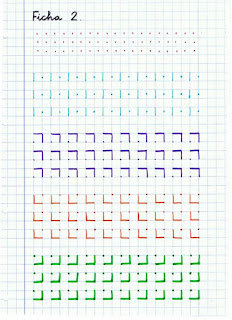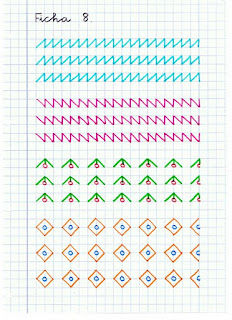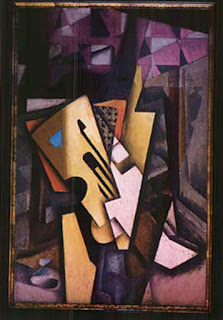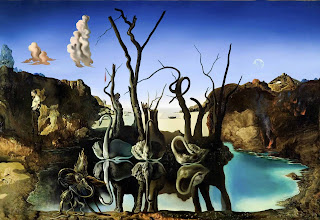Have a look at Michaelangelo's Sistine Chapel:
PATTERNS
ROMAN MOSAICS
CUBISM
"Violin and grapes"
Pablo Picasso
Versions of cubist collage
How to do it
1. Choose
an instrument (Saxophone, guitar, violin, piano, tuba, trumpet)….
2. Choose
2 sheets of colour paper; they should be two different colours.
3. Fold
the papers in half vertically & draw half of the body of the
guitar.
4. Cut
out the shapes while they are still folded in half. Cut
the body in half down the fold line so you have a total of 4 half
guitar shapes.
5. With
the same color halves facing the same direction (as in the picture
above), use charcoal to color & smudge around the curved edge of
the piece that will go in the back.
Next
use white chalk/pastel to draw an outline only (don’t smudge)
around the curved edge. Also on this front body draw a half circle &
fill it in with black charcoal. On the next color paper, turn them
over so they look like they would complete the body. Repeat the same
instructions to the other color halves.
6. Cut
“necks” out of construction paper. Create textures, crimp the necks...
7. Glue
the black edged body to the front body. Also glue the neck onto the
bodies.
8. Ideas
for the background:
ABSTRACT ART
"Yellow, red, blue".
Vassily Kandinsky
"Composition VIII"
Vassily Kandinsky.
"Composition VII"
Vassily Kandinsky.
"Black and violet"
Vassily Kandinsky.
"Electric prisms"
Sonia Delaunay

OPTICAL ART
"Ion 6-6"
Víctor Vasarely
"Études Bauhaus"
Víctor Vasarely
"Harlequin"
Víctor Vasarely
"Keple-gestalt"
Víctor Vasarely
"Ond-dva"
Víctor Vasarely
"Vega"
Víctor Vasarely
"Vega-nor"
Víctor Vasarely
"Tekers-mc"
Víctor Vasarely
"Ion 3"
Víctor Vasarely

Dalí
Frida Khalo
Leonora Carrington
Surrealist objects
"Estos objetos (...) están basados en las fantasías y representaciones que pueden surgir cuando se realizan actos subconscientes. (...) Tienen una función simbólica y no dejan lugar alguno para las preocupaciones formales. Dependen sólo de la amorosa imaginación de cada persona, son extraplásticos", declaró Dalí en una publicación artística en 1931.
Exquisite corpse
ABSTRACT SCULPTURE
Jorge Oteiza
He was one of the most important Spanish abstract sculptors in the 20th century. He experimented with traditional materials such as stone, and others such as concrete and iron. We explores geometric shaps like the cube, the sphere and the cylinder.
http://www.museooteiza.org/
Ideas to work with cylinders
TECHNICAL DRAWING
Drawing parallel lines
Drawing a curved pentagram
Drawing an octagon






































































































No comments:
Post a Comment